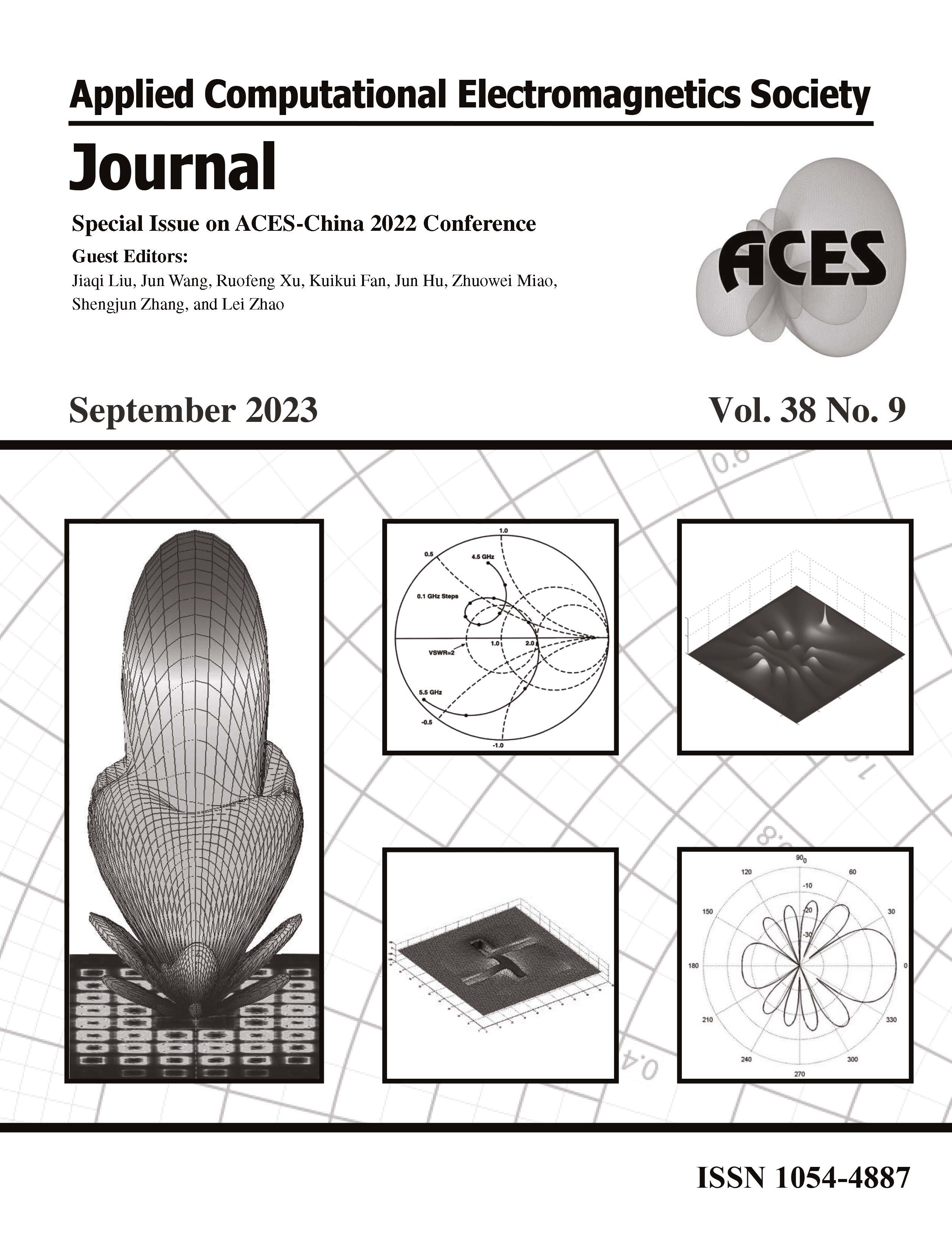Research on Quasi-isotropic Radiation of Small Circular Arc Antenna
DOI:
https://doi.org/10.13052/2023.ACES.J.380911Keywords:
Circular arc antenna, electric field integral equation (EFIE), method of moments (MoM), quasi-isotropic radiationAbstract
The radiation characteristics of circular arc antennas are studied by applying the method of moments (MoM) to solve the electric field integral equation (EFIE). Based on the triangular current distribution of small circular arc antennas, the analytical expression of radiation fields of circular arc antennas is derived. It is found that the circular arc antenna is equivalent to a superposition of an electric dipole and a magnetic dipole, resulting in near isotropic radiation pattern. Finally, both MoM and CST simulations show that the small arc antenna can realize the near isotropic radiation pattern.
Downloads
References
S. M. Radha, M. Jung, P. Park, and I.-J. Yoon, “Design of an electrically small planar quasi-isotropic antenna for enhancement of wireless link reliability under NLOS channels,” Appl. Sci., vol. 10, no. 18, paper 6204, Sep. 2020.
J. Kim, J. Park, A. A. Omar, and W. Hong, “A symmetrically stacked planar antenna concept exhibiting quasi-isotropic radiation coverage,” IEEE Antennas Wireless Propag. Lett., vol. 19, no. 8, pp. 1390-1394, Aug. 2020.
P. F. Hu, Y. M. Pan, X. Y. Zhang, and B. J. Hu, “A compact quasi-isotropic dielectric resonator antenna with filtering response,” IEEE Trans. Antennas Propag., vol. 67, no. 2, pp. 1294-1299, Feb. 2019.
S. I. Hussain Shah, S. M. Radha, P. Park, and I.-J. Yoon, “Recent advancements in quasi-isotropic antennas: A review,” IEEE Access, vol. 9, pp. 146296-146317, 2021.
J. Ouyang, Y. M. Pan, S. Y. Zheng, and P. F. Hu, “An electrically small planar quasi-isotropic antenna,” IEEE Antennas Wireless Propag. Lett., vol. 17, no. 2, pp. 303-306, Feb. 2018.
Q. Li, W.-J. Lu, S.-G. Wang, and L. Zhu, “Planar quasi-isotropic magnetic dipole antenna using fractional-order circular sector cavity resonant mode,” IEEE Access, vol. 5, pp. 8515-8525,2017.
S. M. Radha, G. Shin, P. Park, and I.-J. Yoon, “Realization of electrically small low-profile quasi-isotropic antenna using 3D printing technology,” IEEE Access, vol. 8, pp. 27067-27073, 2020.
Y. Wang, M.-C. Tang, D. Li, K.-Z. Hu, M. Li, and X. Tan, “Low cost electrically small quasi-isotropic antenna based on split ring resonator,” Proc. Int. Appl. Comput. Electromagn. Soc. Symp.-China (ACES), pp. 1-2, Aug. 2019.
S. Li, System and Methodology of Look Ahead and Look Around LWD Tool: U.S. Patent 10,605,073, 2020-3-31.
R. F. Harrington, Field Computation by Moment Methods, MacMillan, New York, 1968.
X. X. Nie, H. L. Liu, J. B. Liu, and J. M. Song, “Research on the small circular arc antenna based on the method of moments,” 2022 International Applied Computational Electromagnetics Society (ACES-China) Symposium, 2022.
L. Li, L. C. Wang, X. L. Yin, and S. F. Li, “Design of an electrically small and near-3D omnidirectional loop antenna for UHF band RFID tag,” 2013 IEEE International Conference on Microwave Technology & Computational Electromagnetics, pp. 246-248, 2013.
C. A. Balanis, Antenna Theory: Analysis and Design, John Wiley & Sons, New York, 2015.
W. L. Stutzman and G. A. Thiele, Antenna Theory and Design, John Wiley & Sons, New York,2012.
J. G. Van Bladel, Electromagnetic Fields, John Wiley & Sons, New York, 2007.
J. M. Jin, Theory and Computation of Electromagnetic Fields, John Wiley & Sons, New York,2010.
CST Microwave Studio, ver. 2020, Computer Simulation Technology, Framingham, MA, 2020.




